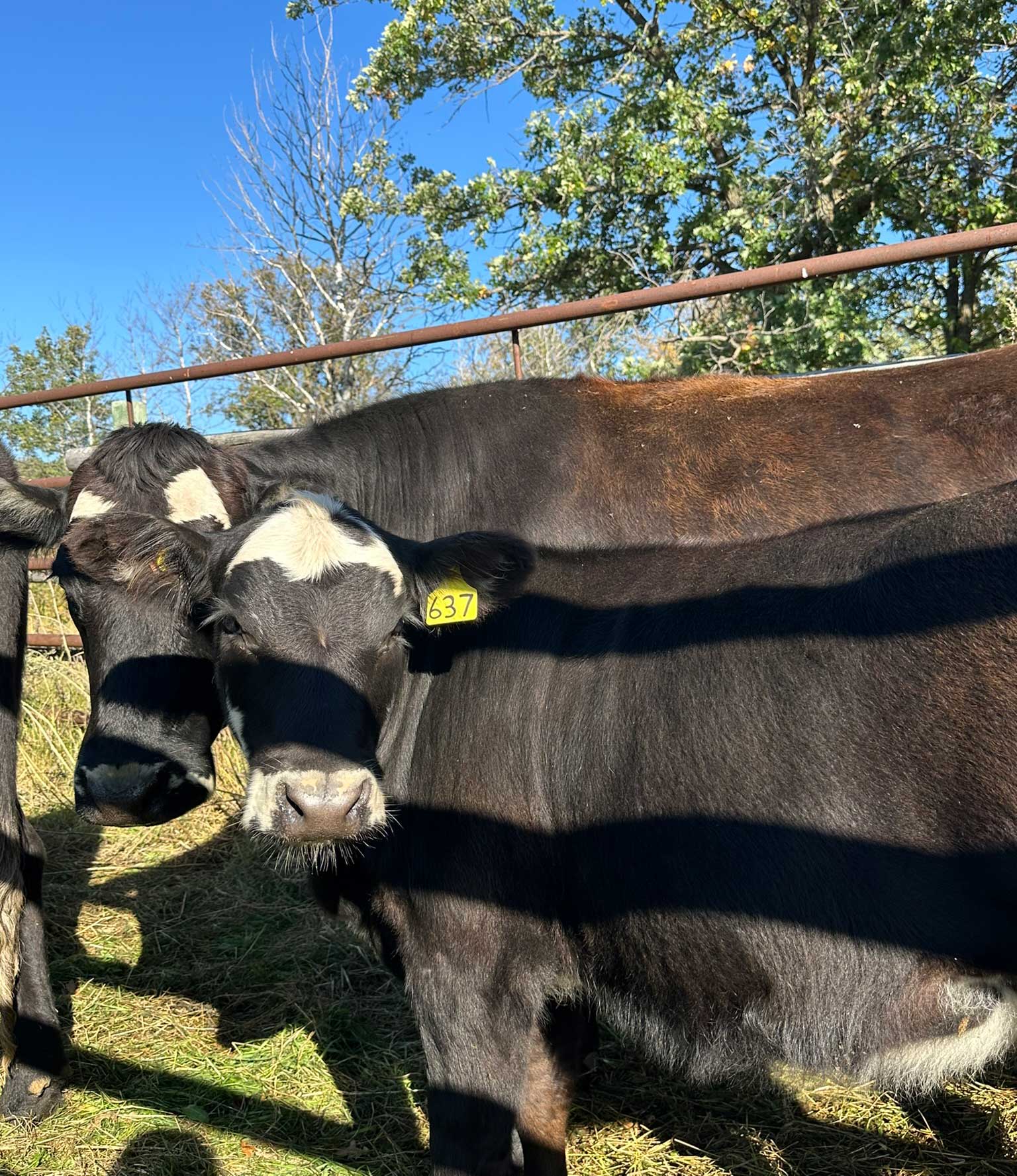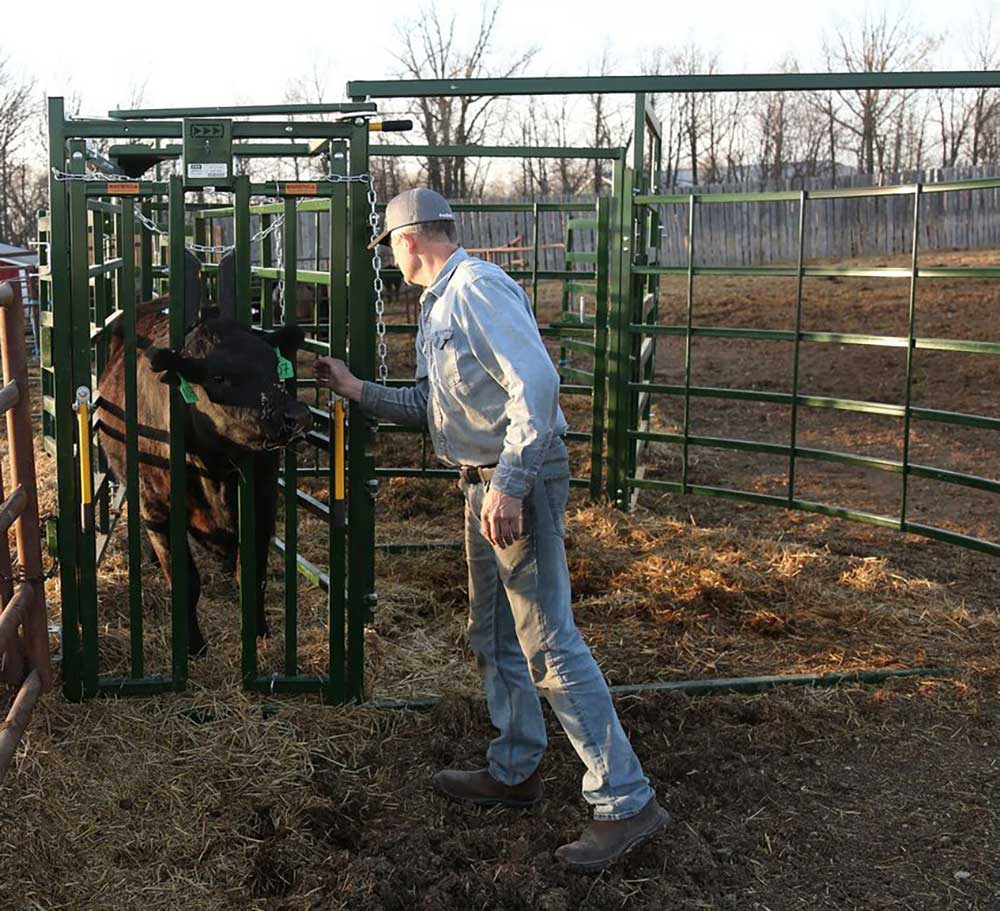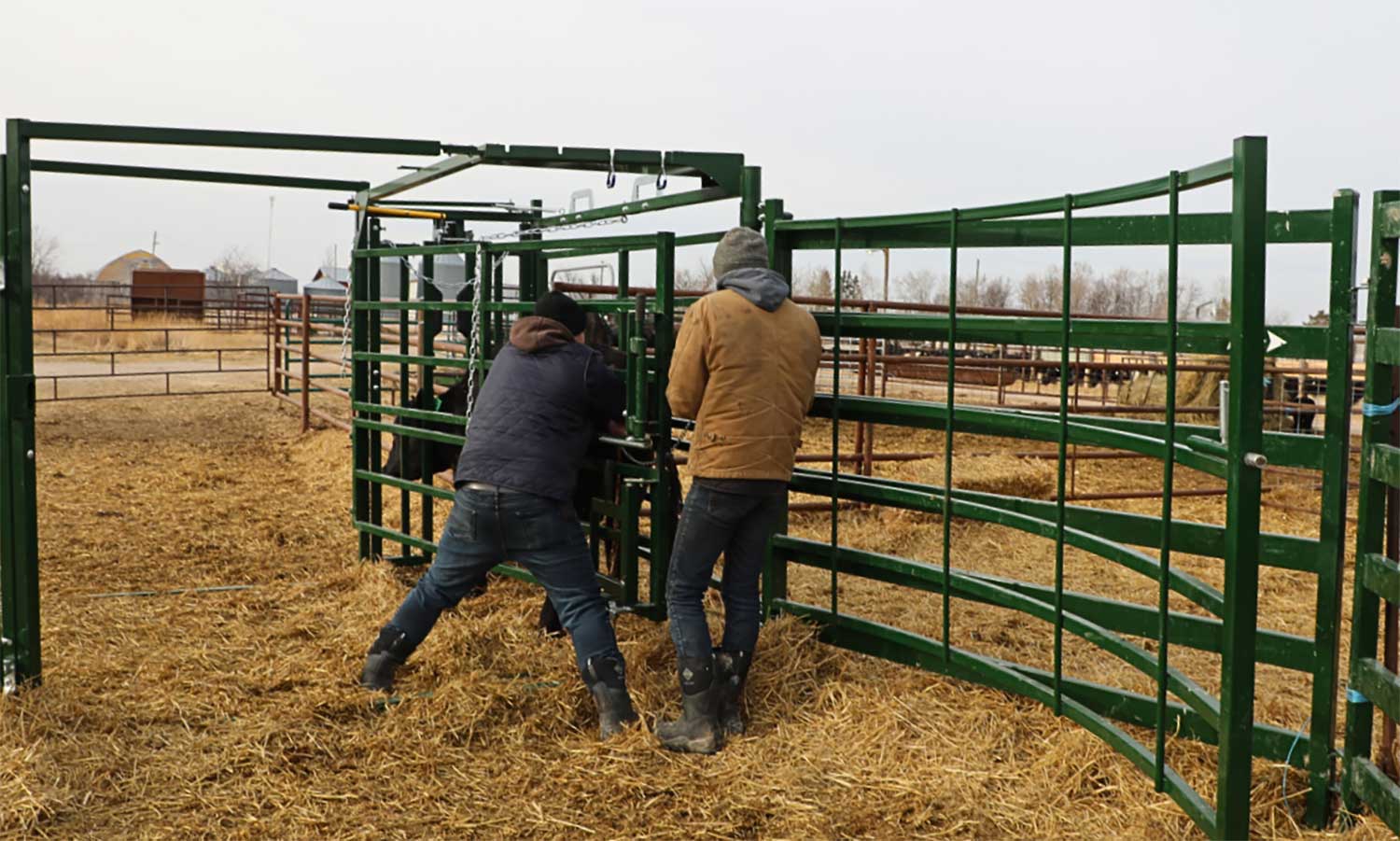Once again, fall has arrived, bringing one of the busiest times of the year to any ranching operation. The cooling temperatures and changing leaves indicate that it’s time to harvest crops, bring cattle home from summer pastures, and prepare for the colder months ahead. While this time of year can be highly rewarding, it can also add stress — especially for those who follow a fall calving schedule. Countless preparation hours and hands-on work are required to ensure everything runs as smoothly as possible.
Whether you’re a seasoned rancher or just starting out, these five tips can ensure a successful season while ensuring animal welfare and your own sanity!
1. Proper nutrition is key
Cattle will require more energy to maintain optimal body condition as temperatures drop. For pregnant cows and those about to calve, it is essential to ensure they receive the best nutrition possible. If your cows are not receiving proper nutrition, especially as they grow closer to giving birth, it can lead to weak calves, low birth weight, and poor milk production, impacting the calf’s early development stages.
Providing your herd with a diet rich in protein and essential minerals is crucial during the last trimester of pregnancy and after calving. Providing high-quality hay and additional minerals through protein tubs, especially if pasture quality has diminished, can help ensure your cattle meet their nutritional needs. It’s also crucial to ensure cattle have access to clean water, as proper hydration helps promote digestion and milk production.
If you’re not sure where to start, it’s recommended that you work with a nutritionist to assess your herd’s specific needs. Factors such as age, breed, and environmental conditions can affect what and how you feed your cattle. This proactive approach will lead to a happier and healthier herd and contribute to a successful calving season.

2. Plan for shelter and weather protection
With fall comes unpredictable weather patterns — one day can be sunny and warm, while the next few days can bring a sudden cold snap. This weather can be especially hard on newborn calves, as their immune systems haven’t fully developed, leaving them more vulnerable to health issues such as hypothermia or pneumonia from the cold and wet conditions. This is why it is important to take all precautions possible to protect them from this weather.
Before your calving season begins, make sure you have sheltered areas prepared so both cows and calves can stay warm and dry. Having windbreaks or outdoor sheds throughout your pens are great options to protect your herd from the elements while they’re outdoors. Additionally, having a well-insulated barn where you can put cattle (especially those who have just calved) when the weather gets too bad is key to minimizing the risk of illness.
It’s also essential to ensure you’re prepared with extra bedding materials to help insulate areas where cattle like to lay and help maintain dry conditions. As your calving season begins, regularly check your calving area for excessive moisture, as this can increase the chance of illness within your herd and put newborn calves at extreme risk. By planning and ensuring your operation is set up properly, you can better minimize loss and keep your herd healthy throughout the season.

3. Be ready to assist
While most cows can calve independently, it’s important to remember that complications can arise, especially with first-time heifers. Being prepared to assist during calving and knowing when and how to step in can make all the difference between life and death for the cow and calf.
As calving season approaches, you’ll want to monitor your cattle closely and familiarize yourself with the signs of potential difficulties. If a cow is straining for more than an hour without progress, or if you see abnormal positioning of the calf (i.e., it’s backward or you only see one hoof), it may be time to step in and help. Early detection can prevent prolonged labor, which can increase the risk of exhaustion, infection, or stillbirth.
It’s also essential to have all calving supplies ready before the season begins, including gloves, calf pullers, disinfectants, rags, and any other supplies you can think of. Being well organized during a high-stress situation will help you act quickly when assistance is needed.
You’ll also want to ensure you have the right equipment, including a calving pen, to assist with birthing complications. When looking at your calving pen, it’s essential to consider the design and its ease. Does your current calving pen allow you to assist your cattle without compromising safety? If the answer is no, it might be time to consider upgrading. Your calving pen should be secure and feature easy-to-use features such as top and bottom swing gates and an adjustable head gate to suit your needs. A calving pen with noise-reducing features, such as a rubber floor, is also important to help keep cattle calm during high-stress situations and keep things moving smoothly.

4. Prioritize post-calving care
After the calf is delivered, your focus shifts to post-calving care — a critical time to ensure both the cow and calf are healthy. Proper care within the first few hours and days can significantly impact the calf’s development and the cow’s recovery.
One of the most important things to watch for immediately after birth is ensuring the calf gets its first feeding of nutrient-rich colostrum within the first 2 – 4 hours after birth. If the calf cannot nurse on its own, you may need to milk the cow and bottle feed it or catch the cow in your calving pen and help the calf nurse directly from the mother.
Once the calf has nursed and is up and walking, keeping a close eye on the calf and cow over the next few days is important. You’ll want to ensure the cow expels the afterbirth to avoid infection, and you’ll want to make sure the pair are bonding well and exhibiting normal behavior.
Fall calving brings its own set of challenges and rewards, but with the right preparation and tools, you’ll be able to navigate this season with complete confidence. Focusing on proper nutrition and being ready to assist when needed can set your operation up for complete success. By keeping these four tips in mind, you can help ensure your herd stays healthy and your calves get the best start in life.
This article was published on behalf of Arrowquip.


